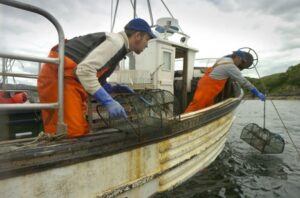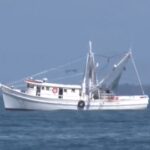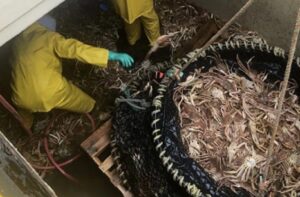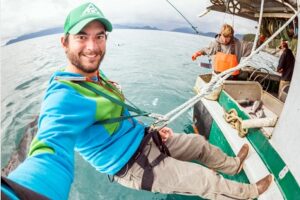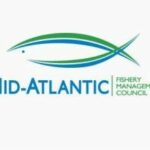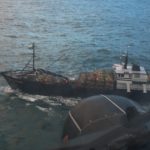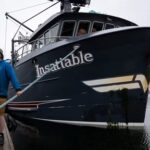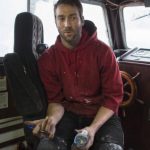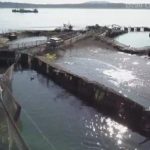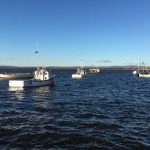Daily Archives: August 3, 2017
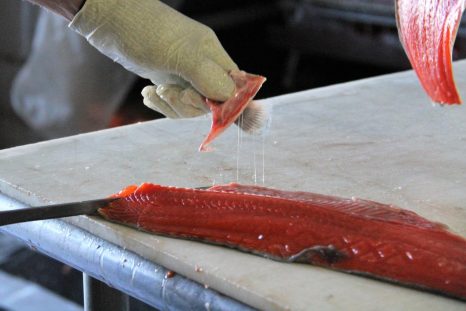
Wild Alaskan Salmon and Seafood: Quality over quantity
Wild Alaskan Salmon and Seafood is a family owned business, processing 25,000 pounds of salmon per day. Inside the plant 13 workers are hard at work. They work long hours, sometimes pulling 22 hour shifts, but morale is high, music is on and people are joking. James Sumrall, assistant manager, said everyone is friends. “When we come here being such a small and tight knit crew it’s kinda like we’re hanging out here. It’s steady and hard work but it’s kinda like we’re hanging out,” he said. “No type of overbearing hand that’s telling you work harder, work faster. Obviously we keep a good pace, but it’s a lot friendlier, moral stays high.” Wild Alaskan Salmon and Seafood is owned by Tony and Heather Woods. Most of the salmon processed at the facility is caught by drifter Tony himself. In fact, he was not available for an interview because he is out fishing the tail end of the season. Audio, click here to read the story 20:09
Dick Grachek: Maximum Sustainable Yield: Just More Management Delusion or a Bureaucratic Con?
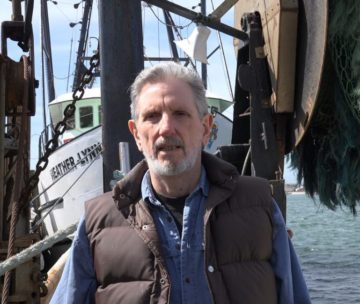 Even if getting out from under the management fantasy of the “extinction delusion” could somehow become a reality, an essential overhaul of the basic goals of fishery management is necessary and must begin by asking the obvious—but totally neglected—question, what exactly is all this management supposed to accomplish, anyway? Maximum Sustainable Yield: Stable and Sustainable Stocks, Right? Well…actually, managing the fisheries to MSY is all wrong. MSY accomplishes nothing more than stock population instability. One of the major mechanisms of this MSY approach is engineering the taking of large fish out of a population in some formulaic proportion to the young recruited into that particular stock. This is a naive and simplistic notion of stock dynamics. It completely ignores a myriad of natural or “biological-environmental” factors that govern fish survival and growth and population. Click here to read the story with a side note from Dick Grachek 17:04
Even if getting out from under the management fantasy of the “extinction delusion” could somehow become a reality, an essential overhaul of the basic goals of fishery management is necessary and must begin by asking the obvious—but totally neglected—question, what exactly is all this management supposed to accomplish, anyway? Maximum Sustainable Yield: Stable and Sustainable Stocks, Right? Well…actually, managing the fisheries to MSY is all wrong. MSY accomplishes nothing more than stock population instability. One of the major mechanisms of this MSY approach is engineering the taking of large fish out of a population in some formulaic proportion to the young recruited into that particular stock. This is a naive and simplistic notion of stock dynamics. It completely ignores a myriad of natural or “biological-environmental” factors that govern fish survival and growth and population. Click here to read the story with a side note from Dick Grachek 17:04
Poor common squid catches to continue in Japan
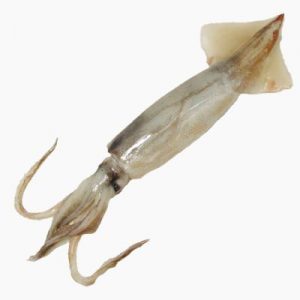 Poor catches of surume-ika, or Japanese common squid, are likely to continue this year. The squid is used in popular home dishes such as sashimi and is also sold in a form that is dried overnight. According to a long-term forecast about fishing conditions by the Japan Fisheries Research and Education Agency, arrivals of surume-ika squid to sea areas near Japan will likely be almost the same or lower compared with those in last year, when catch volumes of the squid were at a record low. Many fisheries experts share a view that the poor catches have been affected by decreases in the number of eggs the squid lay due to the decreasing sea water temperature in the East China Sea during recent years. click here to read the story 14:58
Poor catches of surume-ika, or Japanese common squid, are likely to continue this year. The squid is used in popular home dishes such as sashimi and is also sold in a form that is dried overnight. According to a long-term forecast about fishing conditions by the Japan Fisheries Research and Education Agency, arrivals of surume-ika squid to sea areas near Japan will likely be almost the same or lower compared with those in last year, when catch volumes of the squid were at a record low. Many fisheries experts share a view that the poor catches have been affected by decreases in the number of eggs the squid lay due to the decreasing sea water temperature in the East China Sea during recent years. click here to read the story 14:58
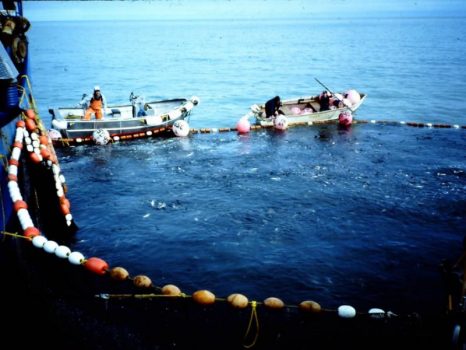
Togiak Sac Roe Herring: Catch the Story Before it’s Gone
My own visual memories of Togiak are not much more than a slate of wide, open grey sky that merged into open grey water. In the early 2000s, I flew out from Homer with a spotter pilot, landed on the beach in the community and then probably took a skiff from the beach to go out to meet my dad’s boat, F/V Agave. At the time, I was certainly not taking notes or paying attention to location details but what I do remember is bleak, grey, bland, flat land. The landscape was nothing like the mountains in south central and south east Alaska, I just recall bleakness. I never had the opportunity to explore the magic features of seeking out glass floats washed from across the Pacific, looking for ivory, exploring the shorelines. I went out to simply fish and retrieve my own juvenile income, not to recall anything else. That was not enough to provide a credible nostalgia of what it was like to fish out there in the peak of the alluring, crazy, chaotic competition combined with a visual recollection of stoic, stark, rural Alaska. By Emilie Springer click here to read the story 14:25
All options to protect right whales ‘on the table,’ says Fisheries Minister Dominic LeBlanc
 The federal government will bring “absolutely every protection possible to bear” to prevent any further deaths of North Atlantic right whales in the Gulf of St. Lawrence, federal Fisheries Minister Dominic LeBlanc pledged on Thursday. His department is working closely with Transport Canada to address the “serious and troubling situation” and will provide whatever resources are necessary to protect the endangered species as well as the people who work near the whales, he said during a news conference in Moncton. The government is prepared to “take all necessary steps.” “Every option to protect right whales is on the table,” he said, citing changes to shipping lanes, surveillance flights or changes to fishing gear as being among the possibilities. click here to read the story 12:53
The federal government will bring “absolutely every protection possible to bear” to prevent any further deaths of North Atlantic right whales in the Gulf of St. Lawrence, federal Fisheries Minister Dominic LeBlanc pledged on Thursday. His department is working closely with Transport Canada to address the “serious and troubling situation” and will provide whatever resources are necessary to protect the endangered species as well as the people who work near the whales, he said during a news conference in Moncton. The government is prepared to “take all necessary steps.” “Every option to protect right whales is on the table,” he said, citing changes to shipping lanes, surveillance flights or changes to fishing gear as being among the possibilities. click here to read the story 12:53
LeBlanc vows to save ‘majestic’ whales after deadly summer – click here to read the story 15:20
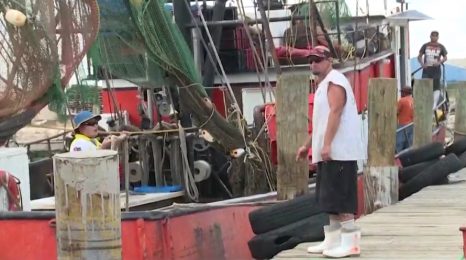
Texas shrimpers say Americans are quitting migrant jobs that are ‘too hard’
Brownsville – Americans taking jobs as shrimpers off the Texas coast are calling it quits, saying the job is just too tough. The jobs they’re quitting are usually filled by seasonal migrant workers, who some companies consider more reliable employees. Shrimping operators claim that federal policies are making it tough to hire more migrants and it’s leading to troubled waters. Some Texas shrimp boats are returning to shore after just two weeks at sea to unload freshly-caught shrimp and newly-hired shrimpers, like 46-year-old Paul Jones. “It’s back-breaking work man,” Jones admitted. “I have too much education for this.” The Mississippi native called it quits after just 17 days on the job. The boat he worked on, the Dorada Cruz, wasn’t supposed to return to shore until mid-August. “The people here, the American guys, you know why they’re not working? Because they feel the same way like I do,” Jones said. “It’s not worth it.” Video click here to read the story 12:33:40
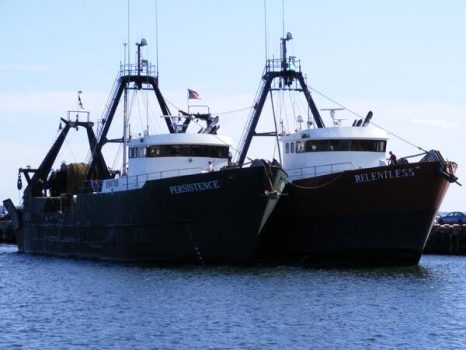
Always Top Quality! Your Seafreeze Ltd. Preferred Price List for August 3rd 2017 Has Arrived!
Contact our sales team today @ 401 295 2585 or 800 732 273 Click here for the complete price list from Seafreeze Ltd. – We are Direct to the Source-We are Fishermen-We are Seafreeze Ltd! Visit our website!11:08
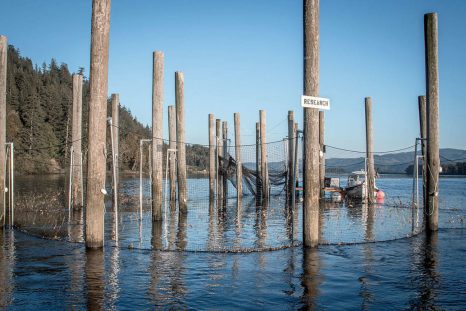
DFW proposes a test commercial fishery using fish traps in Willapa Bay
Fish traps, banned in Washington in 1934 for being so effective they were singled out as the major cause of salmon declines at the time, are now being eyed by the state Department of Fish and Wildlife and wild fish proponents as a tool to allow for commercial harvest of hatchery fish while decreasing the mortality of native salmon in Willapa Bay. “We were thinking, what kind of alternative fishing method should we be thinking about with the commercials,” said Annette Hoffman, Region 6 fish program manager. “We sent out a reminder (to commercial fishing about getting their ideas) in December 2016, got a number of ideas and pursued all those that met the criteria, and only one person followed through with the process and that was the fish trap.” click here to read the story 09:42

Crooks in a Crab Pot
Most people in the bays and estuaries of coastal South Jersey, including places such as Barnegat Bay, have concerns about someone stealing their crab pots or lifting the blue crabs in it. This applies to commercial fishermen as well as the recreational potters. What neither of these groups realizes is that there are probably thieves in their crab pots as well. And these thieves often go undetected even though they are stealing during the day and night and at all stages of the tide. These thieves are the ones that steal the bait from the crab pots. We learned about these thieves by placing a video camera in one of the mouths (tunnels) of a typical pot for blue crabs and dropping it into Willitt Creek with a feed that was attached to a monitor in my office. This approach allowed real-time observations and recording and also prevented me from getting a lot done when there was interesting behavior in the crab pot. click here to read the story 08:51
After falling to historic lows, Alaska commercial fishing deaths on the rise
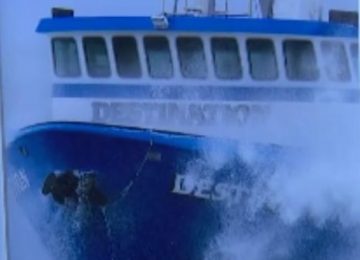 After a recent historic year of no recorded deaths in Alaska’s commercial fishing industry, fatalities in the sector known for its dangers have once again spiked. There have been 10 commercial fishing deaths in Alaska so far in 2017. A large portion of this year’s deaths were from the fishing vessel Destination, which sank in the Bering Sea just north of St. George Island in February. The six men on the boat were later legally declared dead. The other deaths were a man overboard on the fishing vessel Dances with Clams in the Copper River Delta in May, the June capsizing of the boat Miss Destinee in Marmot Bay off Kodiak Island which killed two, and a person overboard from the Lady Colleen in July in Ugashik Bay. This comes not long after the U.S. Coast Guard recorded the first year — measured from Oct. 1, 2014, through Sept. 30, 2015 — of zero operations-related deaths in Alaska’s commercial fishing industry. click here to read the story 07:58
After a recent historic year of no recorded deaths in Alaska’s commercial fishing industry, fatalities in the sector known for its dangers have once again spiked. There have been 10 commercial fishing deaths in Alaska so far in 2017. A large portion of this year’s deaths were from the fishing vessel Destination, which sank in the Bering Sea just north of St. George Island in February. The six men on the boat were later legally declared dead. The other deaths were a man overboard on the fishing vessel Dances with Clams in the Copper River Delta in May, the June capsizing of the boat Miss Destinee in Marmot Bay off Kodiak Island which killed two, and a person overboard from the Lady Colleen in July in Ugashik Bay. This comes not long after the U.S. Coast Guard recorded the first year — measured from Oct. 1, 2014, through Sept. 30, 2015 — of zero operations-related deaths in Alaska’s commercial fishing industry. click here to read the story 07:58

































